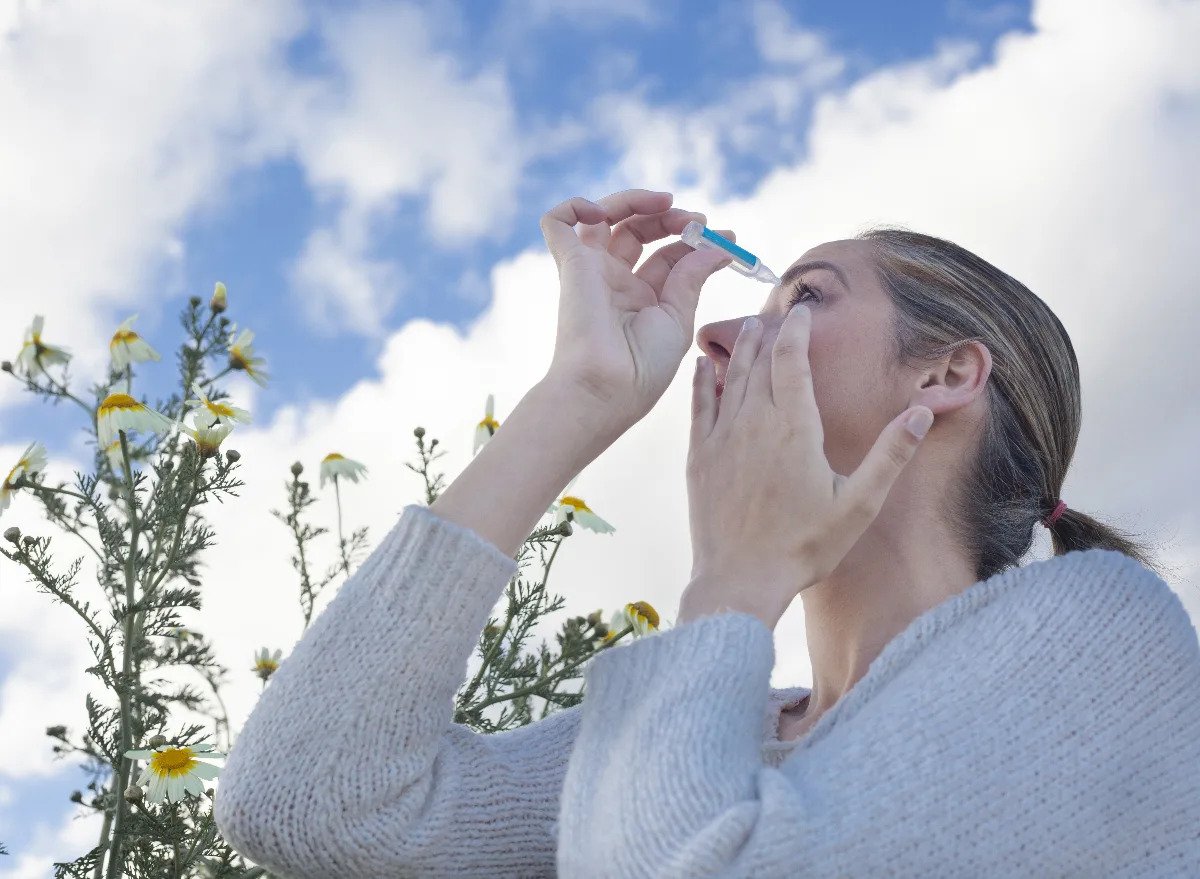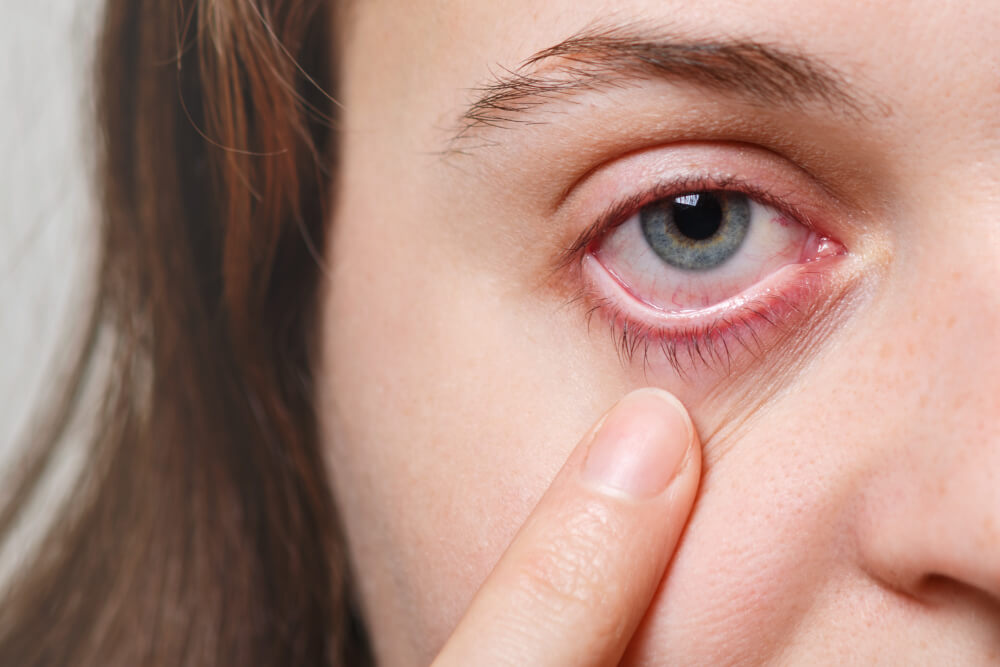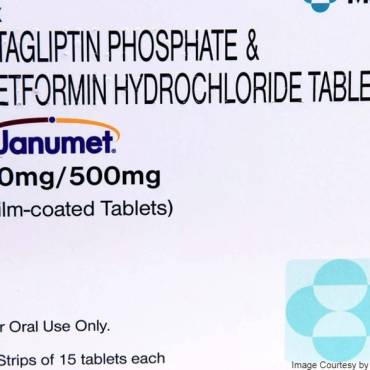Watery eye, also called epiphora or tearing, is a condition in which tears overflow onto the face. Tearing happens when there is either overproduction of tears or insufficient tears from the eyes. When tears are unable to drain properly, they overflow onto the face. Tears are required to keep the front of the eye’s surface healthy and maintain clear vision; excessive tearing can make it difficult to see and create trouble in performing certain activities, such as operating machines or driving, which becomes difficult and dangerous. Epiphora can affect people of all ages, but it is more commonly reported in those under twelve months or over 60. It may affect either one or both eyes. However, it is possible to treat this eye condition effectively.

Cause of Epiphora
The two major causes of watery eyes are blocked tear ducts and excess tear production.
- Blocked tear ducts – The most common causes of watery eyes among adults and older children are blocked ducts or narrowing of ducts. Narrowed tear ducts usually develop due to swelling and inflammation. When the tear ducts are narrowed or blocked, tears will not drain away and build up in the tear sac. This accumulation in the tear sac increases the risk of infection, and the eye will produce a sticky liquid, worsening the condition. Infection can ultimately cause inflammation on the side of the nose next to the eye.
- Overproduction of tears – If your eyes are irritated, they may produce more tears than normal as your body tries to rinse the irritant away. Irritants that cause the overproduction of tears in one or both eyes include:
- Conjunctivitis (pink eye)
- Some chemicals, such as those in fumes and even onions
- Trichiasis, where eyelashes grow inward
- Injury to the eye, such as a scratch or a piece of dirt
- Ectropion is a condition in which the lower eyelid turns outward
Based on the specific causes, the overproduction of tears due to irritation may cause symptoms such as redness, itching, pain, inflammation, blurred vision, and increased sensitivity to light. Some people having high-fat content can also have tears. This causes difficulty in spreading liquid across the eye to produce more tears, leaving dry patches that become sore and irritated, causing your eyes to produce more tears. Moreover, exposure to smoke, wind or cold weather can increase tear production. Other causes of watery eyes include keratitis (cornea infection), a chalazion cyst, dry eyes, corneal ulcer, allergies, or certain medications.
When to contact an eye specialist
Anyone considering using ophthalmic preparations to treat dry eyes should consult an eye care specialist before trying an over-the-counter product. An individual should see an eye care specialist as soon as possible if symptoms persist for longer than one week or if they have used over-the-counter preparations with little effect. An ophthalmologist or an eye care specialist can help rule out and potentially treat underlying health problems for people with prolonged or more severe dry eye conditions. Patients with dry eyes usually get eye drops to eliminate the problem or get advice from their eye care specialist to treat their eye condition.
Treatment options: Most effective eye drops for watering eyes
Treatment usually depends on how severe the eye condition is, the cause, and whether other symptoms are present.
- Irritation – Watering due to viral conjunctivitis improves, whereas ophthalmologists treat bacterial conjunctivitis with antibiotic eye drops. Azithral eye drops 0.1%, Locula eye drops 20%, Tobramycin (Toba eye drop) ophthalmic solution, Ciplox 0.3 ml, Tropicacyl Eye drop and a few more.
- Ectropion – In this condition, when a patient’s eyelid turns outwards, an eye specialist recommends surgery in which an eye care specialist tightens the tendon that holds the eyelid in place. The eye condition may affect one or both eyelids.
- Trichiasis – The eye specialist will remove an inward-growing eyelash from the affected eye.
- Blockage of tear duct – Eye specialists recommend a surgical procedure to create a new channel from the tear sac to the inside of the nose.
Summary
For clear vision, the cornea (the transparent part of the eye that covers and protects the outer part of the eye), which is not supplied with blood, must be continually kept wet and done by tears. Tears are the fluid that maintains eye moisture and transfers oxygen and nutrients to the cornea.
Watery eyes are a common symptom of numerous ocular pathologies; this occurs due to either overproduction or under drainage of tears. A watery eye condition is an uncontrolled flow of tears onto the face. Watery eyes may also occur due to Hyperlacrimation (Overflow of tears due to excessive secretion by the lacrimal gland). Tears play a crucial role in producing and controlling these ocular pathologies.
Watery eyes can affect people of any age, but they tend to affect older adults and children less than twelve months. The condition may develop in either or both eyes. However, the condition can be effectively addressed with the help of eye drops. Yes! Eye drops are very effective for watery eyes and are highly recommended by ophthalmologists. Eye drops such as Azithral eye drops 0.1%, Locula eye drops 20%, Tobramycin ophthalmic solution, Tropicacyl Eye drop, and Ciplox 0.3 ml can effectively treat watery eyes caused by conjunctivitis. Don’t forget to consult an eye care specialist for the best-effective eye drops suitable for your watery eye condition.
Also Read: Top 5 Advantages of Applying Careprost Eye Drops
admin
Latest posts by admin (see all)
- Skin Bleaching Creams: Are They Safe? Everything You Need to Know About Hydroquinone - October 21, 2024
- Finasteride for Hair Loss: How It Works and What to Expect - October 21, 2024
- Tretinoin Cream for Anti-Aging: How It Works and Where to Buy It Online - October 21, 2024



